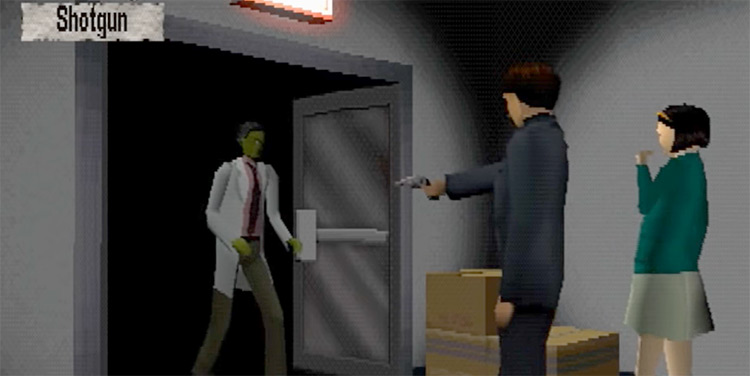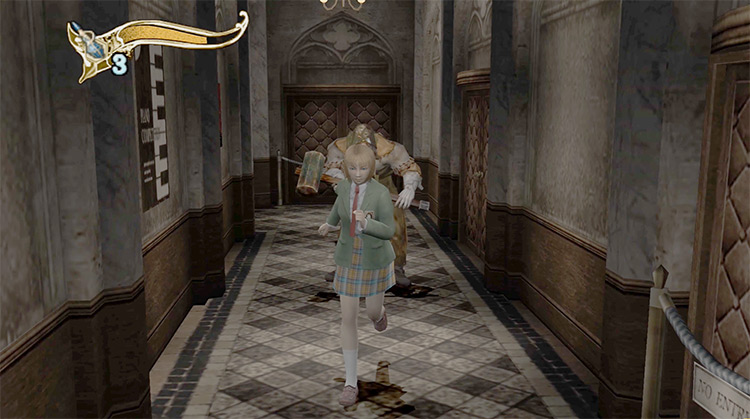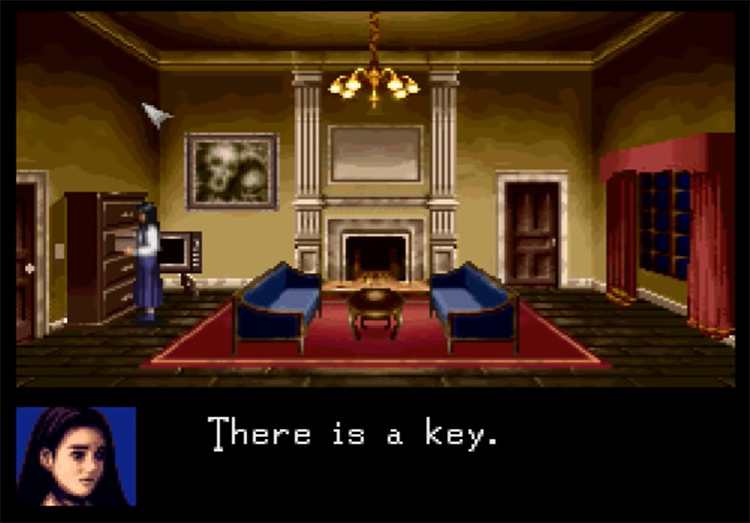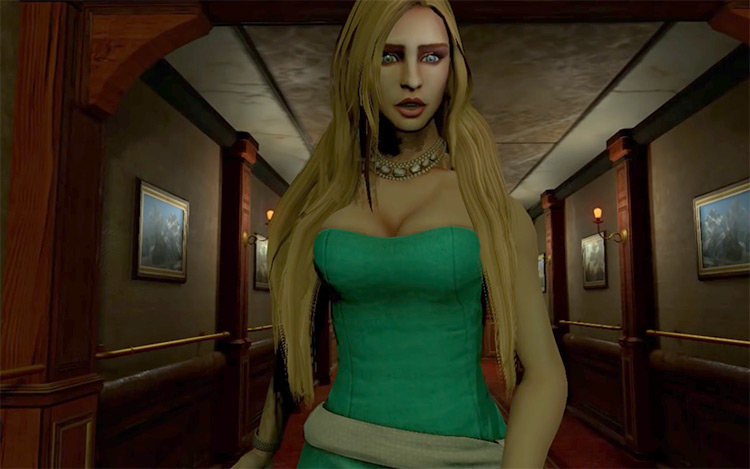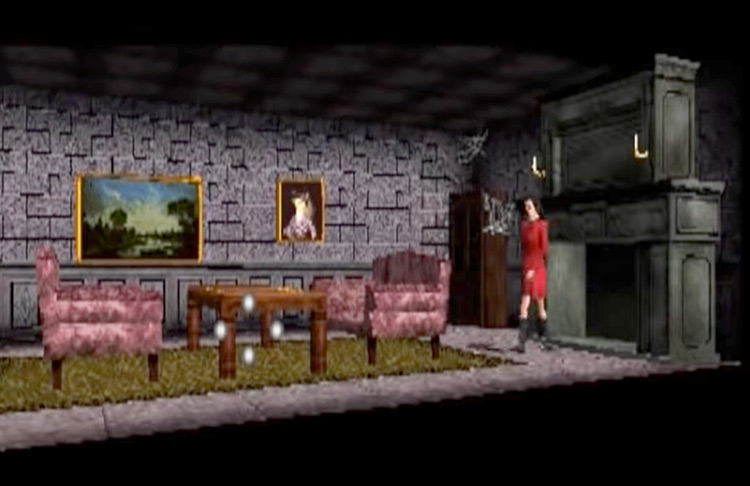Created by Hifumi Kono and developed by Human Entertainment, Clock Tower offers a despair-inducing survival horror experience where the odds are stacked against you for the entirety of the game. There are no Samurai Edge handguns or Grenade Launchers to help. You only have your cleverness and a couple of convenient hiding spots to survive Scissorman’s pursuit. While its point-and-click gameplay feels archaic by today’s standards, the perpetual state of terror was striking at the time, garnering a cult following. It was also one of the few series to offer multiple endings, some of them pretty dark. For those who want to immerse themselves into this corner of gaming history, let’s check out every title in the series to see which are well worth playing.
5. Clock Tower II: The Struggle Within (1999)
Platforms: PlayStation Known as Clock Tower: Ghost Head in Japan, the third installment in the Clock Tower series was also the first to be made without the involvement of series creator Hifumi Kono – a decision I’m sure Human Entertainment eventually came to regret. Instead of the well-known Scissorman, this game sees protagonist Alyssa Hale running from several different enemies. These include zombies and a man with a demon mask, who’s also a crucial part of the story (no spoilers). To survive, Alyssa changes back and forth between herself and an alternate psychotic personality she calls Mr. Bates – each with strengths that’ll let them traverse puzzles in the game. To put it simply, Alyssa solves puzzles, and Mr. Bates shoots enemies. While the personality-changing mechanic is an interesting addition, it’s not enough of a counterweight to the game’s many failures, like its absurd storyline and counter-intuitive puzzles. The point-and-click gameplay was also beginning to feel too outdated for the times, despite the graphical updates. Without Hifumi Kono, the series lacked the unique spark and passion that made its predecessor a cult game despite having many of the same shortcomings. It’s worth playing if you’re a hardcore fan, but if you’ve never played any Clock Tower games then definitely keep reading.
4. Clock Tower 3 (2003)
Platforms: PlayStation 2 The last installment in the original Clock Tower series is also one of the most criticized in the entire franchise, despite its graphical achievements and truly updated gameplay. Developed by Capcom, the game follows sexy protagonist Alyssa Hamilton, the last in a long line of powerful women who travel through time to defeat demonic entities. She starts her adventure in 2003 London, but is transported to the 1940s, and then the 1960s. Each time, the environment changes considerably and feels really like games within a game. In every sequence, Alyssa will first have to avoid the subordinates while finding clues about what’s really going on. This is somewhat of a mystery series, after all. Eventually, Alyssa summons a spirit longbow so she can finally fight back. This gameplay loop was heavily criticized for being repetitive and all-around uninteresting. That said, the game is still worth a play for any fan of the series. Alyssa is a solid protagonist, character models are gorgeous, and it has excellent cinematic storytelling thanks to Japanese film director Kinji Fukasaku also directing the game.
3. Clock Tower (JP) (1995)
Platforms: SNES, PlayStation, Windows, WonderSwan While Westerners only learned of the Clock Tower franchise with the international release of the PSX classic in 1997, the first game in the series was actually released only in Japan for the Super Famicom. It follows Jennifer Simpson, a Norwegian orphan who’s adopted by the Barrows family, along with some other girls. Once in their new home, it becomes clear that something is amiss. Jennifer must fight for her life and escape the fearsome Scissorman – the same one from the PSX classic. Creator Hifumi Kono was heavily inspired by Italian horror film director Dario Argento when coming up with the game’s story, specifically the 1985 film Phenomena. Protagonist Jennifer Simpson is based on Phenomena’s own Jennifer Corvino as a nod to the film. The point-and-click gameplay was a bit old-timey even back then, but Kono’s masterful directing and attention to detail managed to make the game an engrossing, tense experience. This is a game where correctly managing your stamina and cleverly hiding are your only chances of survival. The game received much praise from Japanese publications for its excellent sound design and graphic achievements at the time. And even for non-Japanese speaking gamers, if you want to play the game that started it all, you can find several fan translations available online.
2. NightCry (2016)
Platforms: Windows, PlayStation Vita If we’re talking about the entire Clock Tower franchise and its legacy, it would be a disservice to skip over its legacy and spiritual successor. Developed by Nude Maker and directed by Clock Tower creator Hifumi Kono, NightCry reprises the same tense atmosphere and panic-inducing gameplay of the original Clock Tower. It goes so far as to make the main villain a giant scissor-toting ghoul by the name of Scissor Walker, as a nod to the original Scissorman. That said, the game goes further than just re-tracing its predecessor’s steps. NightCry keeps things fresh by following a different protagonist for each of the game’s three chapters, and features two strong female leads that better represent the times. Another spiritual successor worth mentioning is Capcom’s Haunting Ground, released in 2005 for the PS2. While Haunting Ground was visually striking and had some solid gameplay, it received criticism for objectifying its female lead – though some fans would argue that was one of its selling points. Either way, both of these games deserve a spot in this ranking, and both are absolutely worth playing if you’re a fan of the Clock Tower series.
1. Clock Tower (1997)
Platforms: PlayStation Despite being the second installment in the series, Clock Tower was marketed as an entirely new series for US/UK/EU audiences, to avoid alienating potential newcomers. Depending on the player’s choices during the game’s prologue, the game follows either Jennifer Simpson or her adoptive mother Helen Maxwell. This route-based storytelling eventually leads to ten different endings, one of the game’s most well-loved features. You can read about all 10 endings here, and yes there’s spoilers. According to series creator Hifumi Kono, he was closed to making a sequel until he saw what next-gen graphics were capable of in games like Resident Evil. As such, the 1996/1997 Clock Tower release has incredible graphics. Actually the game’s graphics are one of its biggest strengths and added so much to the immersive survival horror experience. Reviewers often compare the game to RE, but Clock Tower’s gameplay is much slower and suspenseful. It’s more akin to an interactive horror movie, which earned it a lot of praise. Being the one title that polished Clock Tower’s gameplay from the first game, also refining aspects like the Escape Mode and fleshing-out strength management, it’s hard to deny its profound influence in the series. It was new, unique, and is still remembered as one of the PlayStation’s scariest games.
